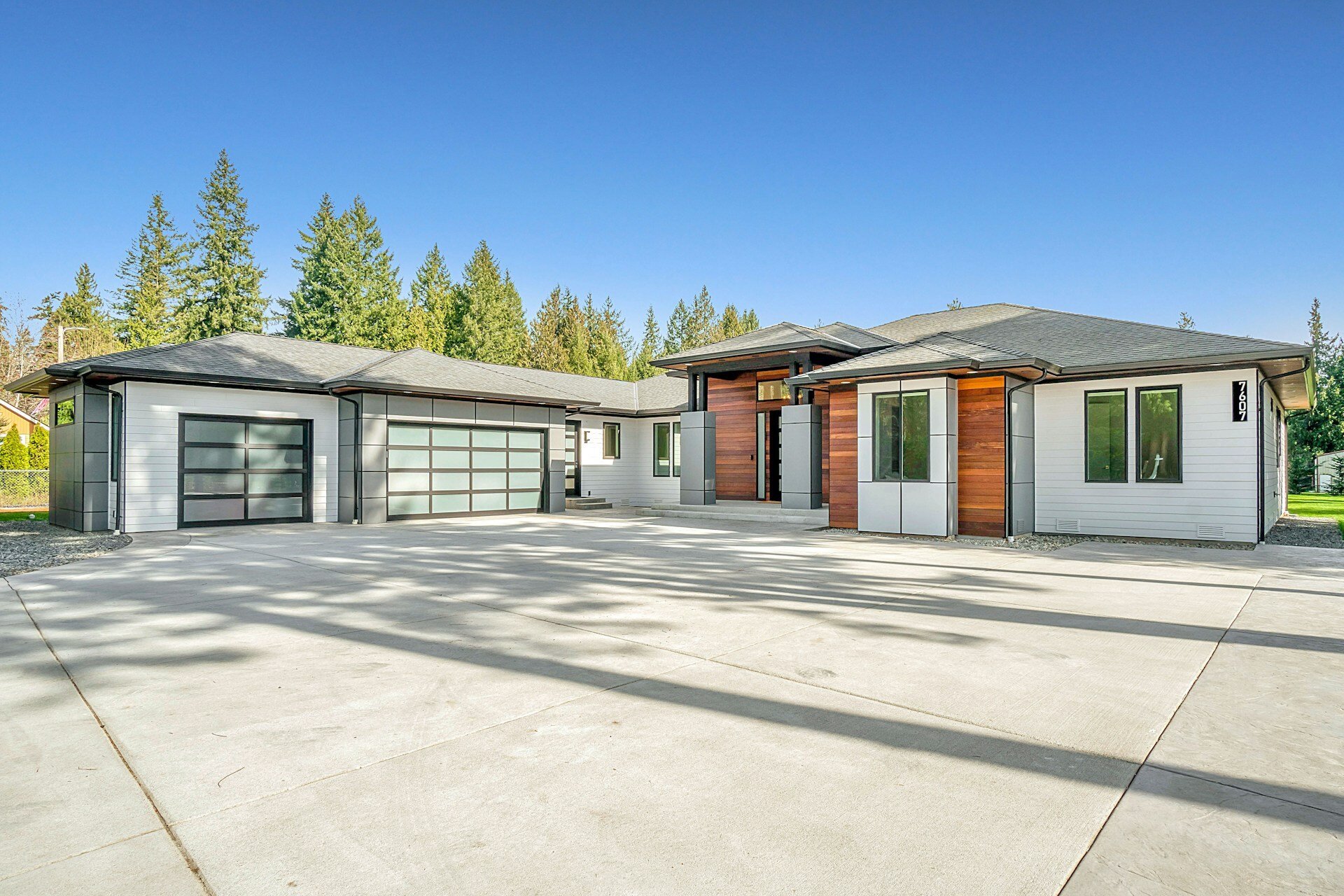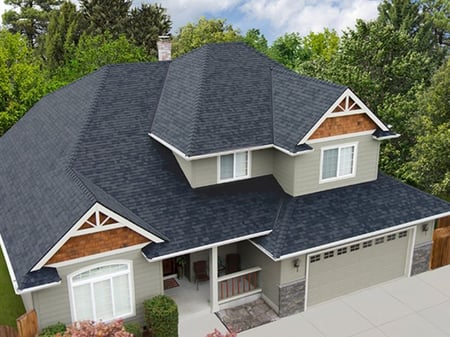
When homeowners invest in a new roof, one of the first questions that often comes to mind is, “How long will my roof last?” I mean, It’s a fair question. After all, a new roof is a significant investment, and you want to ensure it lasts as long as possible.
At RoofCrafters, we know that while there isn’t a one-size-fits-all answer, several factors can influence the lifespan of your roof, from the materials used to the climate you live in.
So, if you’ve recently had your roof replaced, and you’re wondering if it was the best bang for your buck, you’re in the right place. Let’s break down some facts together so you can have a better idea of what to expect and how to make your roof last longer, shall we?
Factors That Affect Roof Longevity

Before we dive into the specific lifespans of different types of roofing materials, it’s important to understand that several factors can impact how long your roof will last:
Roofing Material
This is arguably the most important factor when determining how long your new roof will last. Different materials have different lifespans. For example, a roof made of asphalt shingles will not last as long as one made of metal or tile. We’ll get into the specifics of material lifespans below.
Installation Quality
Even the best materials won’t live up to their potential if they’re not installed correctly. A poorly installed roof can lead to leaks, early wear, and other problems that shorten its lifespan. Make sure to hire a reputable contractor with experience in the specific type of roofing you choose.
Climate and Weather
The weather conditions in your area play a big role in how long your roof will last. If you live in an area with extreme weather, whether that’s heavy snowfall, scorching sun, or strong winds, your roof will likely face more wear and tear, which can reduce its lifespan.
Maintenance
Regular maintenance is key to prolonging the life of your roof. Simple tasks like cleaning your gutters, inspecting for damage, and fixing small issues before they become bigger problems can help you get the most out of your roof.
Lifespan of Different Roofing Materials

Now, let’s look at the different types of roofing materials and how long you can expect each to last. Keep in mind that these are general guidelines—actual lifespan can vary depending on the factors we discussed above.
Asphalt Shingles
Asphalt shingles are one of the most popular roofing materials in the U.S. due to their affordability and ease of installation. They come in three main varieties: 3-tab shingles, architectural shingles, and luxury shingles.
- 3-tab shingles: These typically last 15 to 20 years. They’re the more affordable option but also the less durable one.
- Architectural shingles: These are thicker and more durable than 3-tab shingles, often lasting 25 to 30 years.
- Luxury shingles: This designer option that is oftentimes more durable and weather-resistant than its counterparts typically lasts 25-50 years.
If you’re looking for a budget-friendly option and you’re okay with replacing the roof after 20-30 years, asphalt shingles might be the way to go.
Metal Roofing
Metal roofing has gained popularity in recent years due to its durability, energy efficiency, and modern aesthetic. The lifespan of a metal roof can vary depending on the type of metal used.
- Aluminum or steel roofing: These materials typically last 40 to 50 years. They’re resistant to rust and can withstand harsh weather conditions.
- Copper roofing: Copper is a premium material that can last even longer - up to 70 years or more. Over time, it develops a green patina that many homeowners find attractive.
While metal roofing tends to be more expensive than asphalt shingles, its long lifespan can make it a more cost-effective option in the long run.
Tile Roofing
Tile roofs, made from either clay or concrete, are known for their durability and long lifespans. A well-maintained tile roof can last anywhere from 50 to 100 years or more. They’re resistant to fire, insects, and rot, making them a great option for homeowners in areas prone to extreme weather conditions.
However, tile roofing can be quite heavy, so it’s important to ensure your home’s structure can support it before opting for this material. It’s also on the more expensive side, but the longevity may make up for the upfront cost.
Slate Roofing
Slate is another premium roofing material with a long lifespan, often lasting 75 to 100 years or more. It’s incredibly durable and can withstand harsh weather conditions. Like tile, slate is heavy, so you’ll need to ensure your home can support the weight.
Slate is also one of the more expensive roofing materials, but if you’re looking for a long-term investment and a roof with timeless beauty, it might be worth considering.
Wood Shingles or Shakes
Wood shingles or shakes, typically made from cedar, can give your home a natural, rustic appearance. They usually last 25 to 30 years, although in drier climates, they can last longer. However, wood is more susceptible to fire, rot, and insect damage, so it may not be the best option in areas with high humidity or wildfire risk.
Extending the Life of Your Roof

Regardless of the type of material you choose, there are several steps you can take to ensure your roof lasts as long as possible. First, regular inspections are key! It’s important to have your roof inspected at least once a year by a professional who can spot potential issues, such as damaged shingles or leaks before they become major problems. Additionally, inspecting your roof after major weather events, like storms, is a good precaution.
Next, gutter maintenance plays a crucial role. Clogged gutters can cause water to back up and seep under your roof, leading to water damage and leaks. To avoid this, make it a habit to clean your gutters regularly, especially in the fall when leaves and debris tend to build up.
Trimming nearby trees is another important step. Overhanging branches can scratch and damage your roof, especially during windy conditions. By trimming back any trees near your home, you can prevent branches from falling on your roof or causing harm.
Proper ventilation is also essential for maintaining a healthy roof. Without adequate ventilation, heat and moisture can accumulate in your attic, leading to mold, rot, and the premature aging of roofing materials.
Lastly, always repair any damage promptly. Even small issues, like damaged shingles or leaks, can quickly escalate into bigger, more costly repairs if left unattended. By addressing these problems early, you can prevent further damage and help extend the life of your roof.
Signs It’s Time for a Roof Replacement

Even with the best care, your roof will eventually reach the end of its lifespan. Here are some signs that it might be time for a replacement:
Curling or cracked shingles: If your shingles are curling or cracking, it’s a sign that they’re deteriorating and may no longer provide adequate protection.
Leaks: Water stains on your ceiling or walls are a sign that your roof is leaking and may need to be replaced.
Granule loss: If you notice a lot of granules from your shingles in your gutters, it’s a sign that your shingles are nearing the end of their life.
Sagging roof: A sagging roof is a serious issue that indicates structural problems. It’s important to address this immediately.
How Long Will My New Roof Really Last?
So, how long will your new really roof last? The answer depends on the material you choose, the quality of the installation, and how well you maintain it. On average, most roofs will last anywhere from 20 to 50 years, but some materials, like tile or slate, can last much longer.
By investing in quality materials, ensuring proper installation, and taking steps to maintain your roof, you can enjoy many years of protection and peace of mind.
In the end, a well-maintained roof is an investment in the longevity of your home. Keep these factors in mind when choosing your roofing material, and you’ll be well on your way to a roof that stands the test of time. If you believe your new roof is in trouble, but aren’t sure where to start, be sure to hit that “Schedule an Inspection” button down below!
At RoofCrafters, our mission is to provide job opportunities for others to thrive and grow while making a meaningful impact within our communities.



